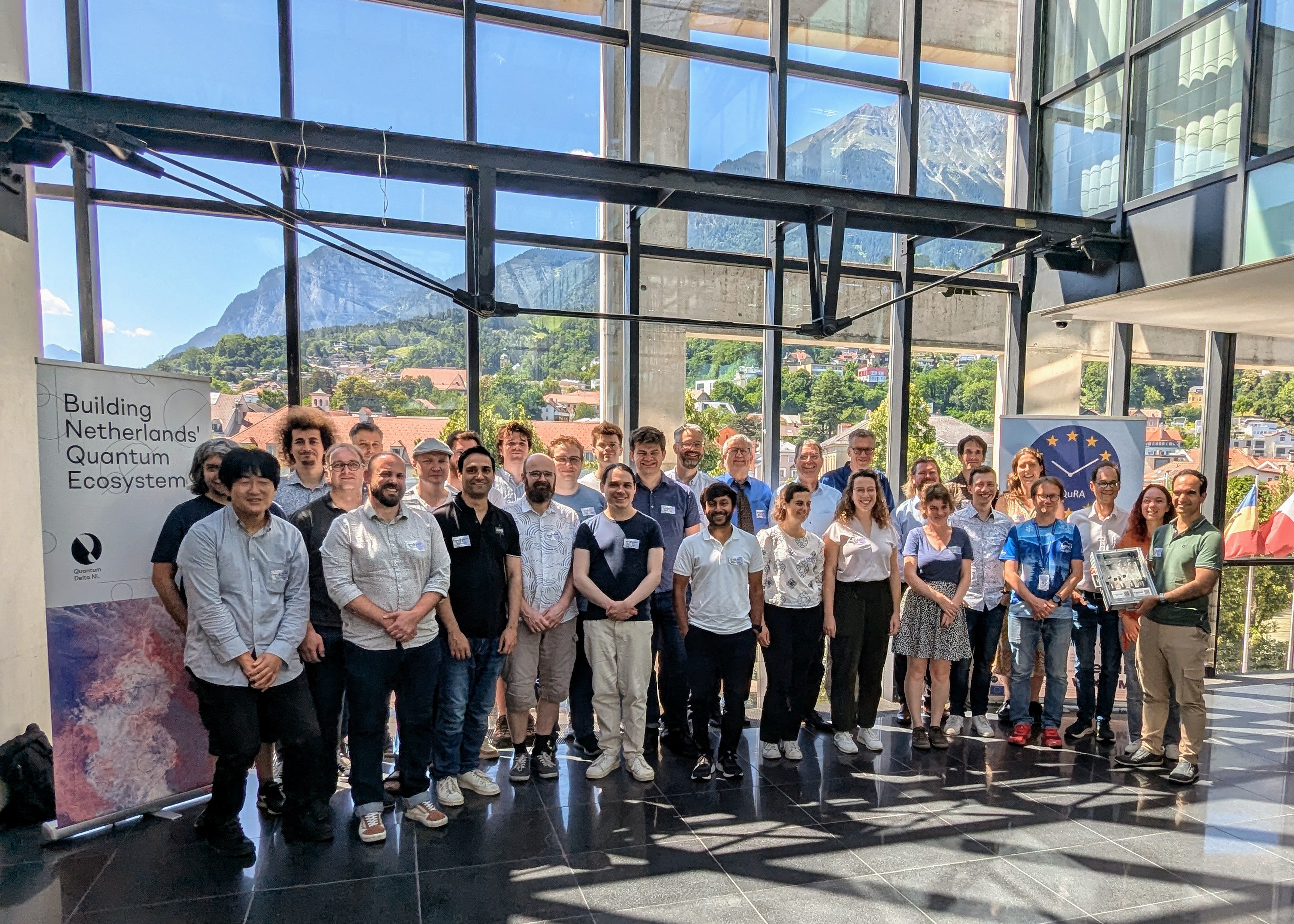AQuRA/CoCoRICO Symposium brings together optical atomic clock community in Innsbruck
Navigation, data communication and telecommunication - many areas of our modern, digital and information driven society critically depend on the availability of highly precise and stable clocks.
Microwave clocks, in which the oscillator is realized by stabilizing a microwave frequency to an atomic transition, serve as today’s gold standard in many of these applications and build the basis for definition of the SI-second. However, current microwave clocks are engineered up to the point where significant improvements in performance can hardly be expected.
Optical clocks – which rely on atomic transition interrogation using lasers and subsequent frequency down-division into the radio frequency or microwave domain using an optical frequency comb – outperform their microwave counterparts in performance. Moreover, as they are based on lasers, their signals can be readily disseminated using existing optical links, which opens up exciting possibilities for precise time and frequency transfer, in both terrestrial and space borne applications1.
In recent years, tremendous progress has been made in their development: the best clocks to date reach a stability of 10-18 or beyond and several optical clocks contribute to the International Atomic Time (TAI)2, the basis for the Coordinated Universal Time. While these high-stability clocks are operated at research institutes or national metrology institutes (NMIs), the first commercial optical clocks are currently entering the market as an alternative to, for example, hydrogen masers.
Despite their enormous potential, further advancements on both the clock system level, the underlying technology supply chain and their metrological qualification are required before optical clocks will be ready for broad deployment - and overcoming these challenges will require international collaboration.
To stimulate such collaboration, the AQuRA3 and CoCoRICO4 projects hosted a symposium on “Optical Clocks and Enabling Technology” on June 29 in Innsbruck, Austria. Organized as a satellite event to the 15th European Conference on Atoms Molecules and Photons the workshop featured 8 speakers from Europe, the United States and Japan, and 36 participants from 11 countries. The speakers, coming from NMIs, industry and universities, covered a broad range of topics: from frequency combs, to optical lattice clocks, to microwave clocks and to clocks for space applications. This provided a lively platform for the exchange of ideas, the discussion of challenges and the initiation of new connections and collaborations.

Funding acknowledgement:
Funded by the Quantum Delta NL Visitor’s Programme and the European Union (AQuRA, G.A. 101080166). The project 23FUN02 CoCoRICO has received funding from the European Partnership on Metrology, co-financed from the European Union’s Horizon Europe Research and Innovation Programme and by the Participating States. Views and opinions expressed are however those of the author(s) only and do not necessarily reflect those of the European Union, the European Commission or EURAMET. Neither the European Union nor the granting authority can be held responsible for them.
References
1 https://www.dlr.de/en/research-and-transfer/projects-and-missions/compasso